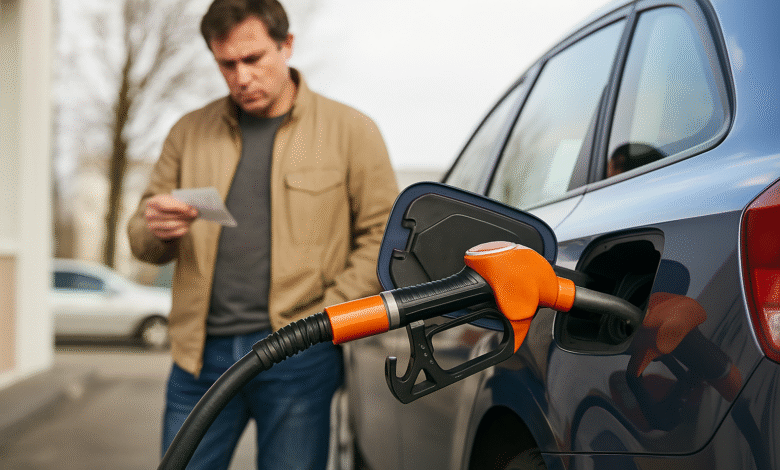Why Car Ownership Costs Are Rising and What to Do About It?

Car ownership has long symbolized freedom and mobility for people around the world. Recently, however, that freedom has come with a steadily increasing price tag.
You may have noticed this trend yourself when paying for insurance, repairs, or even just filling up your tank. Understanding these rising costs represents the first step toward managing them effectively.
In this comprehensive guide, we will explore the complex factors that make car ownership more expensive. We will examine everything from insurance premiums to repair costs in detail. More importantly, we will provide actionable strategies to help you counter these increases.
The Steady Climb of Car Ownership Costs
By the Numbers
Recent data reveals a clear upward trajectory in vehicle ownership expenses across multiple categories. According to AAA’s 2025 Your Driving Costs analysis, the total cost of owning and operating a new vehicle reached $11,577 annually, approximately $965 per month. This figure encompasses all major expense categories, including fuel, maintenance, insurance, and depreciation.
While 2025 did see a slight decrease of $719 from the previous year, primarily due to reduced depreciation and lower fuel costs, the overall trend across recent years continues to point upward.
This temporary reprieve offers little comfort when examining the dramatic increases in specific expense categories that have occurred over the past several years.
The Biggest Offenders
Certain components of car ownership have risen more dramatically than others. Insurance premiums have surged remarkably, increasing by an average of 15% nationwide in 2024 alone. This followed another substantial increase of 16.5% the previous year, pushing the average annual cost of full coverage to $2,435. This makes insurance the fastest-growing expense category for vehicle owners.
Repair and maintenance costs have similarly climbed at an alarming rate. Automotive repair expenses have increased nearly 25% since early 2022, creating significant financial pressure when vehicles need servicing.
Even seemingly minor components now come with major price tags due to their technological complexity.
What Is Driving These Cost Increases?
Technological Complexity and Repair Costs
Modern vehicles contain sophisticated technology systems that dramatically increase repair complexity and cost. Even minor incidents involving basic components like bumpers can result in unexpectedly high repair bills due to integrated sensors and cameras. The days of inexpensive cosmetic repairs have largely disappeared.
This technological evolution has created a critical shortage of qualified technicians who possess the specialized knowledge to repair modern vehicles.
The industry faces a projected deficit of 642,000 workers by 2024, creating upward pressure on labor rates while simultaneously extending repair times.
Modern repairs increasingly require specialized diagnostic equipment and advanced training, further increasing costs.
Electric and hybrid vehicles present additional challenges for repair shops. EV repairs currently cost 46.9% more than conventional vehicles due to their specialized components and limited technician availability. As these vehicles continue gaining market share, these cost pressures may affect more consumers.
Environmental Regulations and Equipment
Stringent environmental regulations have necessitated increasingly sophisticated emissions control systems. Modern catalytic converters, particularly those meeting Euro 4 and Euro 5 standards, incorporate precious metals that make them expensive to replace when they fail. What was once a simple component has become a complex, costly system.
Governments worldwide are implementing new tax structures that impact ownership costs. In the UK, for example, 2025 brings significant changes to vehicle excise duty, including new taxes for electric vehicles and increased rates for higher-polluting models. Similar regulatory changes are occurring across global markets, each adding to the cost burden of vehicle ownership.
Market Dynamics and Global Trends
The automotive industry continues to experience significant supply chain disruptions and material cost increases. Parts prices have experienced volatility, with aftermarket components seeing significant increases due to these ongoing disruptions.
The complexity of modern vehicles means replacement parts often incorporate advanced technology, making them more expensive to manufacture and source.
Consumer preferences also contribute to rising costs. The Deloitte 2025 Global Automotive Consumer Study notes that SUVs continue to gain popularity, with market share increasing to 57% in Europe.
These larger vehicles typically come with higher operating costs, including increased fuel consumption and more expensive tires and components.
Practical Strategies to Reduce Your Costs
Smart Driving and Maintenance Habits
Your driving habits and maintenance approach offer significant opportunities for savings. Simple changes like removing unnecessary weight from your vehicle can improve fuel efficiency, as each 50kg reduces consumption by up to 2%. Similarly, removing unused roof racks reduces drag, further enhancing fuel economy.
Proper tire maintenance delivers substantial savings. Ensure your tires remain properly inflated, as under-inflation by just 15psi could result in additional fuel use of approximately 6%. Investing in high-quality tires with lower rolling resistance also improves fuel efficiency, though you should avoid driving aggressively in cold temperatures when engines operate less efficiently.
Strategic Insurance and Tax Management
Insurance premiums represent one of the fastest-growing costs, but you can take steps to control them. Never simply accept automatic renewal quotes from your insurer, as these rarely represent the best available rate. Instead, proactively contact your provider before renewal to negotiate better terms or shop competing insurers.
Consider installing a dash cam, which can reduce your insurance premium by approximately 25% while helping protect your no-claims discount.
Additionally, reassess your annual mileage declaration if you have reduced unnecessary journeys, as lower mileage typically translates to lower premiums.
For road tax management, always opt for annual payments when possible rather than monthly instalments to avoid surcharges.
Fuel Efficiency Tactics
Fuel costs typically represent the second-largest ownership expense after depreciation, making efficiency crucial.
Use cashback credit cards specifically designed for fuel purchases, which can provide 1.5% or more back on your spending.
Additionally, research fuel prices in your local area using comparison websites or apps, but avoid driving excessive distances solely for cheaper fuel, as the transportation cost may outweigh the savings.
Rethinking Your Relationship With Car Ownership
The Downsizing Opportunity
If your current vehicle no longer fits your budget, consider downsizing to a more affordable model. As one industry expert notes, “The biggest thing you can do to save on car ownership costs is not to buy more cars than you need”.
The cost difference between vehicle types can be significant, with medium SUVs and pickup trucks costing thousands more annually to operate than smaller vehicles.
When downsizing, consider models known for reliability and low operating costs. Smaller vehicles typically save money across every cost category, including insurance, taxes, and fuel.
Exploring Alternative Transportation
For some households, reducing from multiple vehicles to one represents the most impactful cost-saving strategy. If you do need a second vehicle, consider “a small and/or electric secondary car to cut the running costs”.
The Deloitte study also notes that many younger consumers now express interest in mobility-as-a-service over ownership, representing another potential alternative.
Evaluate whether any regular trips could shift to public transport or carpool arrangements. Alternating weekly school runs or work commutes with another driver can significantly reduce both your fuel costs and vehicle wear.
Simply grouping errands into efficient circular routes rather than making multiple separate trips can generate meaningful savings.
Strategic Vehicle Selling Options
When downsizing makes financial sense, you have multiple selling options. In the UK, you might use a service like We Buy Any Car, a prominent car-selling platform that offers online valuations and hundreds of locations nationwide.
Alternatively, consider platforms like Exchange My Car, a UK-based comparison service that matches sellers with multiple verified car-buying companies to help secure competitive offers.
Always obtain multiple quotes when selling your vehicle, whether through online car-buying services, dealerships, or private sales.
Each channel offers different trade-offs between convenience and price. Remember that used cars are currently “fetching particularly good prices”, making this potentially an advantageous time to sell if you can transition to a less expensive vehicle.
Final Thoughts
Car ownership costs will likely continue rising due to complex technological, regulatory, and market factors. However, you possess significant power to manage these expenses through informed decisions and proactive strategies.
By understanding the underlying causes, adopting smarter driving habits, optimizing insurance and tax payments, and potentially reevaluating your vehicle needs, you can effectively counter these financial pressures.
Remember that the most expensive car is often the one that exceeds your actual needs. Regularly reassess your transportation requirements and budget allocation to ensure your vehicle remains a convenience rather than a financial burden.
With careful planning and the strategies outlined above, you can continue enjoying the freedom of personal transportation without surrendering to escalating costs.
What steps will you take this week to start reducing your car ownership expenses?



